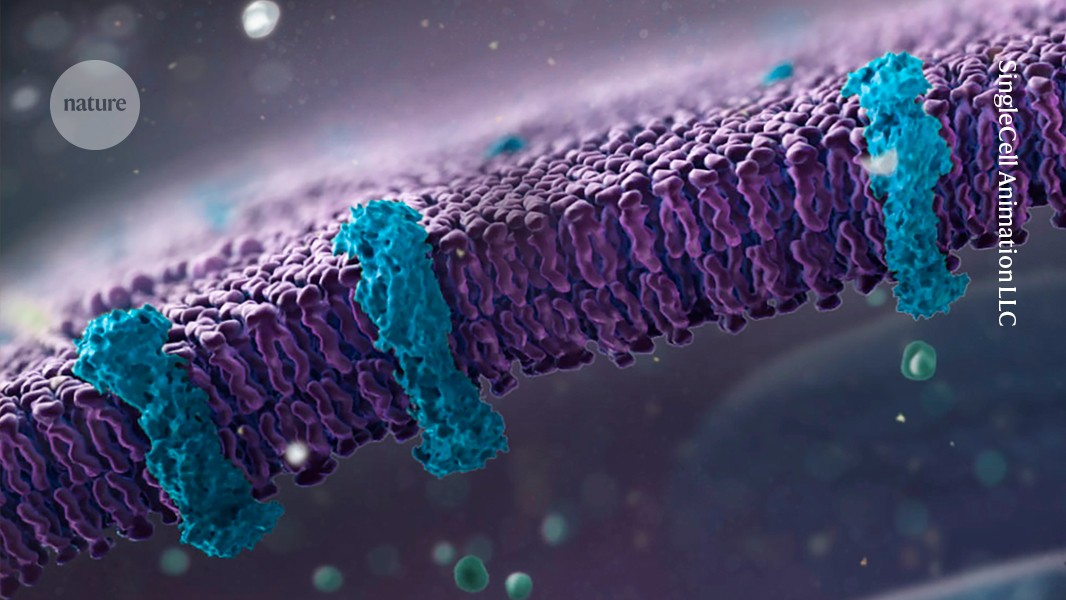
A new technology can recognize specific features on the cell surface (illustration pictured) and synthesize tailored proteins accordingly.Credit: SingleCell Animation LLC/Science Photo Library
Scientists have created a tool that manufactures working proteins directly on the surfaces of specific cells by targeting several molecular features at once — an approach that could one day produce therapeutics at sites in the body where they are needed most.
The SMART system (splicing-modulated actuation upon recognition of targets) builds proteins that are designed to recognize specific markers on cell surfaces, such as certain combinations of antigens — molecules that trigger immune responses. It achieves this through ligation, or splicing together two inactive protein fragments — each targeting a separate antigen — to form a functional protein, which can either stay tethered to the cell on which it was created or be released into the surrounding environment. The method was described in a study published on 30 July in Nature1.
The system’s capabilities are “compelling”, says Gevorg Grigoryan, a computational biologist who co-founded Generate Biomedicines, a therapeutics company in Cambridge, Massachusetts. The technique has “broad relevance across diagnostics, cell engineering and therapeutics”, he adds.
For years, researchers have been experimenting with ways to target designer proteins to specific cells. Although many tools can recruit relevant proteins to the cell surface, for instance using antibodies, few can generate molecules on-site, says study co-author Tom Muir, a chemical biologist at Princeton University in New Jersey. Neither can these systems release synthesized proteins into the extracellular environment, he adds.
To overcome this hurdle, Muir and his team started by tweaking an existing protein ‘superglue’, called SpyCatcher003, so that it would create a designated protein, depending on the cell surfaces it encountered.
Shapeshifting proteins
The secrets to SMART’s shapeshifting abilities are ‘split inteins’ — short, non-functional protein segments that, when combined, can excise themselves from a protein. When the system attaches to two specific targets on the same cell, the inteins splice themselves out and snap the remaining fragments together to create a working molecule. “It kind of spits out this new protein that’s functional on the other side,” Muir explains.
The researchers programmed their system to target two cell-surface antigens called HER2 and EGFR, which play a part in cell growth and division. When they let SMART loose on K562 human leukaemia cells and added the SpyCatcher target, SpyTag003, coupled to a fluorescent dye, it produced a fluorescent signal — but only when it reacted with cells expressing both antigens, not those with just one or none at all. This result confirmed that the system could distinguish between target cells and others on the basis of the conditions that the team assigned.
Muir and his colleagues then adapted SMART to target a cell-adhesion protein called EpCAM. They introduced this new design to cells that expressed different levels of EpCAM, HER2 and EGFR. Once again, the system could target and react only with cells that expressed the correct protein combinations — for instance, EpCAM and HER2 but not EGFR. The team could also tune the system to produce different amounts of its manufactured proteins, meaning that users can control its output levels.


